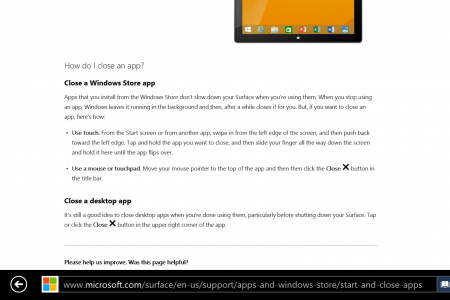Modification
Member
Correct me if I am a wrong here.
In order to "remove" an app from the system tray (but have it still running in the background), you can swipe from the top middle all the way down and release.
In order to completely exit the app, you do the same thing but hold at the bottom for 3 seconds.
What is the pros/cons for both?
Also it says on the Microsoft website that you should exit all desktop apps before you shut down. Does this include MUI apps as well? Why can't we just shut down with everything active?
Attached is a picture of the website.
In order to "remove" an app from the system tray (but have it still running in the background), you can swipe from the top middle all the way down and release.
In order to completely exit the app, you do the same thing but hold at the bottom for 3 seconds.
What is the pros/cons for both?
Also it says on the Microsoft website that you should exit all desktop apps before you shut down. Does this include MUI apps as well? Why can't we just shut down with everything active?
Attached is a picture of the website.

